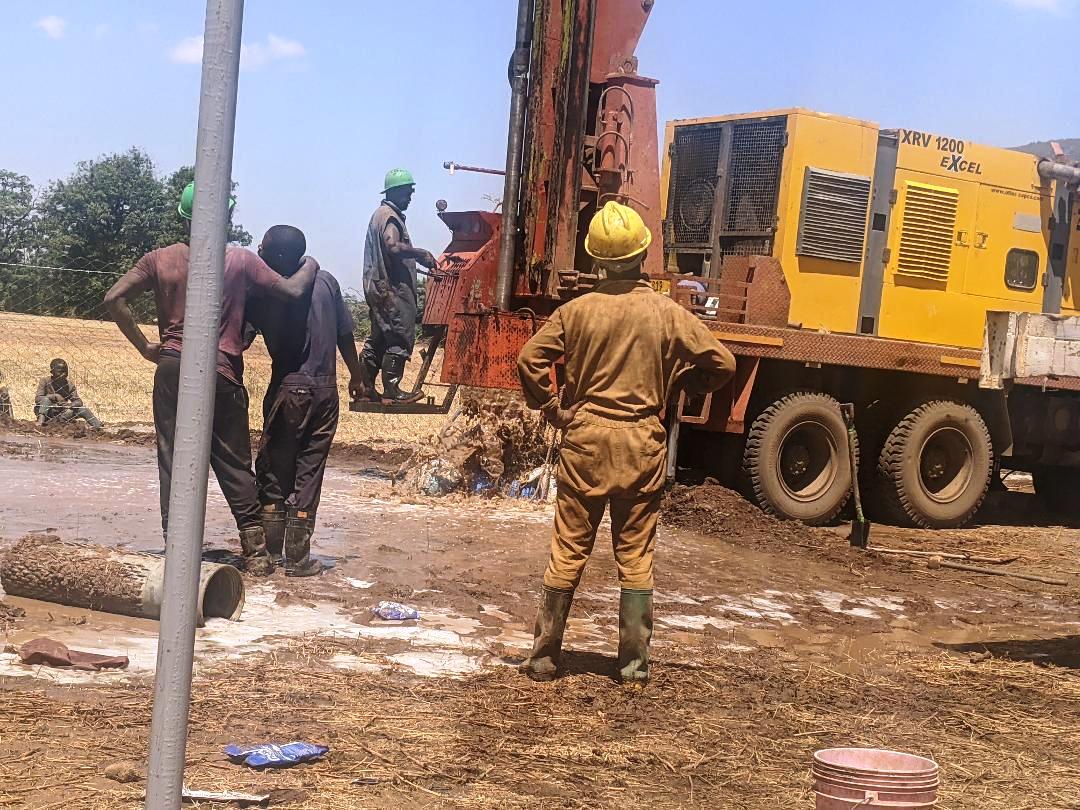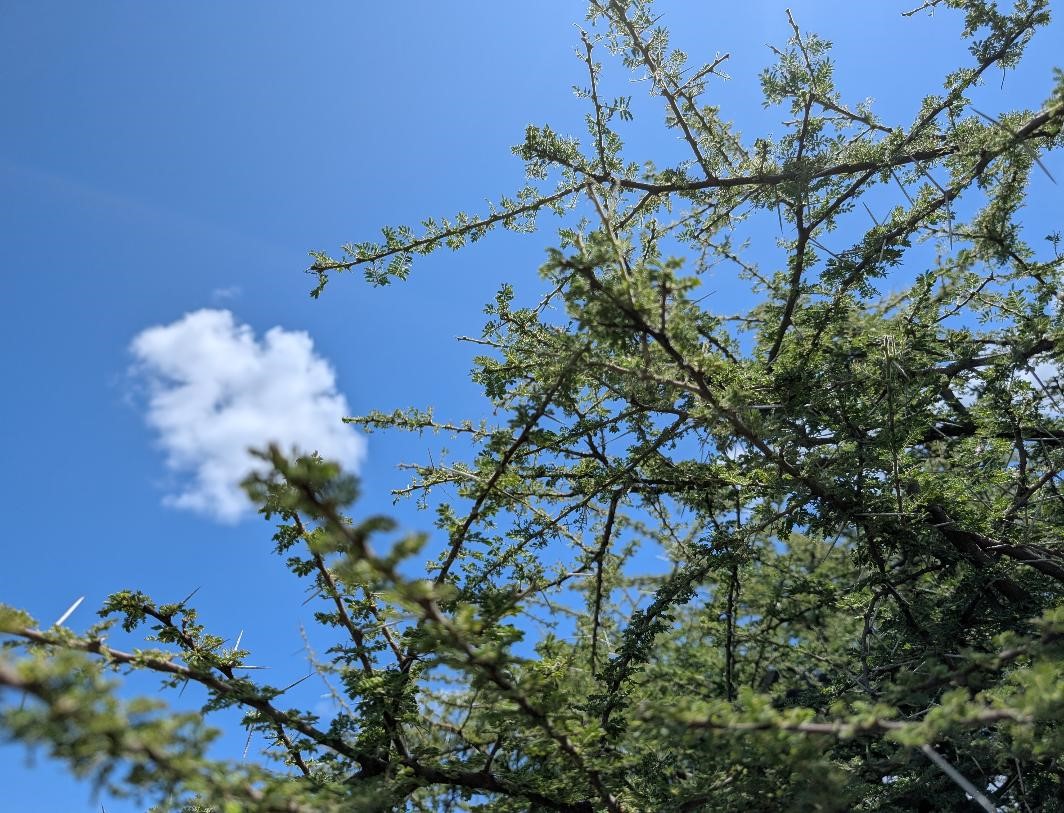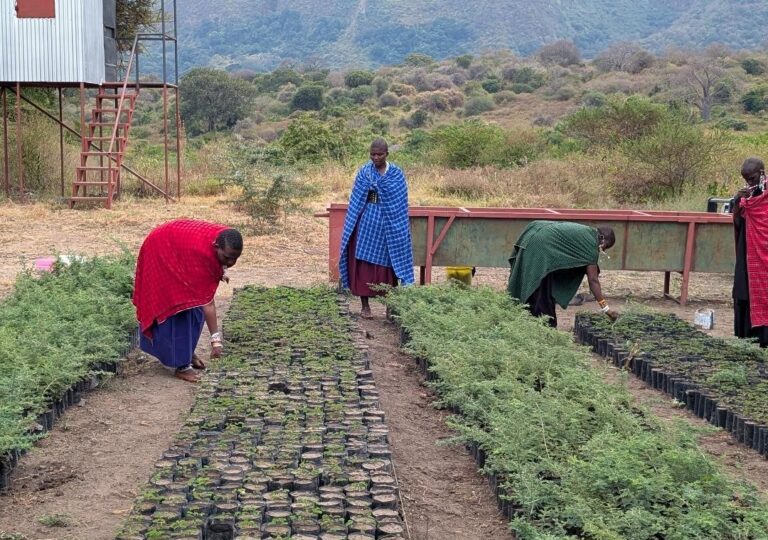
As we awaited dry weather, some initiatives were on hold. Now they’ve resumed, and I am happy to tell you about recent actions. From the time we began these projects, we’ve aimed to develop approaches to drought-proof farming to sustain rural life, even as weather becomes increasingly difficult.
Exploring new approaches
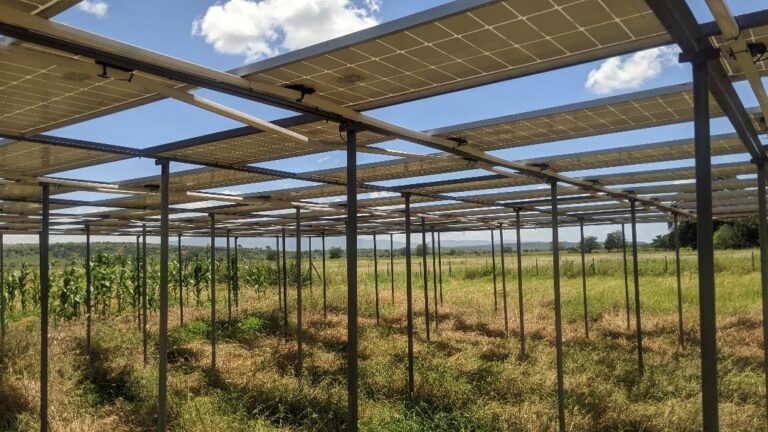
The marriage of solar and agriculture is a popular area of exploration, and we are glad to be a part of it. We enjoy working with pumping groundwater with solar-powered pumps at our Smart Farm. We have also had great success in our tree work.
We realize that controlling carbon in the earth’s atmosphere is not going to be accomplished by carbon sequestering in small economies like this one. But trees have a myriad of benefits.
The people of the Rift Valley come to us with the commitment to care for the tree seedlings we supply to them. The people have good ideas about how the trees will make things a little better near their settlements or schools.
Drought-proof farming
With the passing of the rainy season, our Smart Farm neighbors need another water source. They are highly motivated to explore our groundwater approach. They want to see if drilling boreholes and pumping groundwater for irrigation is a good investment for them.
To be a good investment there has to be a cooperative organization with drilling costs borne by all. This way, each farmer can get the benefit of pumped groundwater.
The Smart Farm has six neighboring farmers. Here are the steps we are taking for organizing the Neighbor Cooperative:
- The ICSEE will provide a 5000-liter tank, mounted on a high platform at our boundary with each of the six farms.
- Each farmer will have a tank we fill twice a week with groundwater from our borehole.
- We have installed wonderfully efficient drip irrigation, and will demonstrate this to the Cooperative.
- Each farmer will develop an irrigation plan to use the water we provide.
- The farmer will pay for the pipes, valves, and other equipment that brings the water to the areas of their farms that need it.
- The ICSEE will have frequent meetings with the Cooperative to evaluate, plan, and share irrigation approaches with each other.
By helping the Maasai become less dependent on rain, this program demonstrates our approach to climate change adaptation. We look forward to continuing these explorations and sharing updates.
Tree program
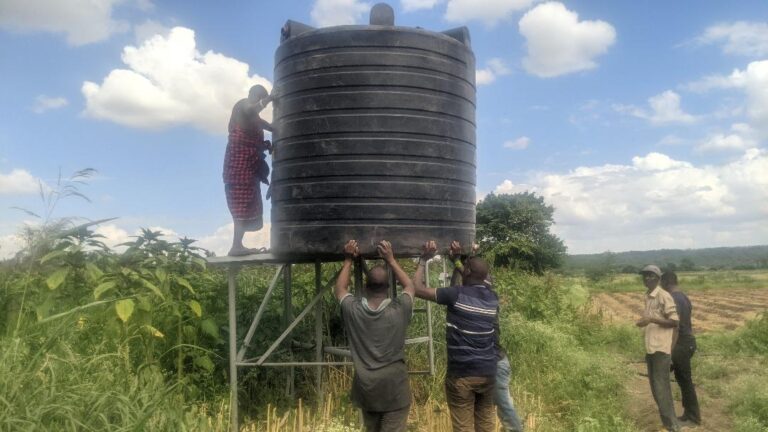
We love our tree program, provided in collaboration with the Planeterra Foundation. As we’ve described, the Smart Farm and the additional work we do with Maasai herders is all about adaptation to climate change.
On the ground in rural Africa, climate change is manifested by bad weather that threatens the possibility of continuing normal life. Adaptation can protect against some of the climate disruption.
So far, the people of the Rift Valley have planted 54,000 trees that we have provided. Our Tree Nursery is on our Rift Valley property up against the Ngorongoro Highlands escarpment. It is also where we have our Manyara Cattle Feedlot.
We raise the tree seedlings and provide them free-of-charge to any Maasai settlement or institution (such as a school)) that requests them.
So far, we see the people using them in two ways. They plant the seedlings along the dried wood fences of Maasai bomas. As they grow, the trees turn the fences into living barriers that are more stable, beautiful, and long-term than the wood fences alone.
We’ve also been asked to provide large numbers of trees to fill plots of land adjacent to settlements, schools, and other groups.
A wish for trees
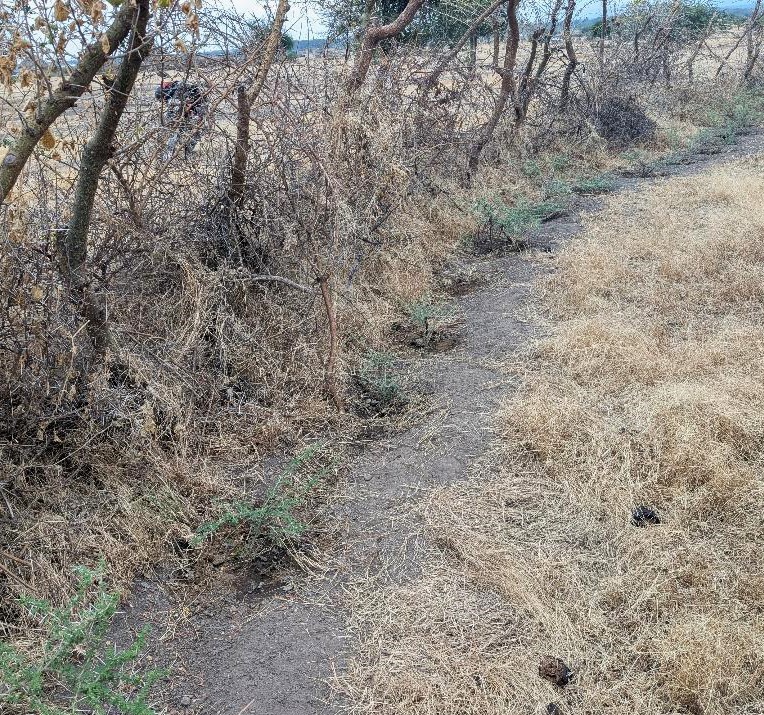
We ourselves do not choose the sites for planting the trees. Instead, we find people who want trees and who take the responsibility to site, plant, and nurture them. Because the people want the trees and initiate these requests themselves, we are already observing an excellent survival rate. As the trees mature, they require less oversight, and we anticipate the program’s continuing success into the future.
Recently planted acacia seedlings will grow to become a living barrier in front of existing wooden fences, as seen in this photograph.
Most significant
We think about climate change mitigation, which means to somehow slow or reverse its cause.
It is possible to look at the carbon sequestering in growing plants as a significant help to slow global warming. Of course, the amount of carbon our trees gather back from the atmosphere is minimal in comparison to the massive emissions from rich countries. But we are happy about the trees as well as the jobs created by growing and distributing them.
It is the existence of the trees themselves and their harmonious life alongside the people that we find most significant.
Your generosity benefits the entire community
All this is possible because of your generosity and collaborative spirit

For your $50 gift, a family settlement receives 200 trees to plant.

Help get the smoke out! Your $160 gift means a mom and her kids will breathe better in their homes.

Contribute $1400 to install a micro-electric grid for an entire settlement.
